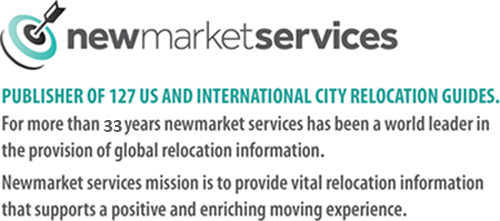St. Louis stood as a gateway to the west long before the famed St. Louis Arch was erected, before Six Flags flew over St. Louis and before Anheuser-Busch brewed its first beer. French explorers Marquette and Joliet discovered the mouth of the Missouri River in 1673; St. Louis was founded as a fur trading post nearly 100 years later, in 1764, by Pierre Laclede and René Auguste Choutou, who named the town after France’s King Louis IX.
However, St. Louis’ history actually began long before the 18th century. Historians think Native Americans built earthen dwellings here in 400 BC and may have roamed this area more than 1,000 years before that. While Europe was in the Middle Ages, this rich culture vanished for reasons that still elude historians.
By 1804, St. Louis was the hub of the American fur trade and had become the starting point for Lewis and Clark’s explorations of the Louisiana Territory. Ever a river city, St. Louis saw its first steamboat on the mighty Mississippi River in 1817 and, due to its central location, has since continued to grow as a transportation hub. The city experienced a population boom beginning in 1857 when the railroad arrived, bringing Irish, German and Italian immigrants with it. The Italian Hill, the German-populated South Side and the Jewish populated community in Mid-County offer just a sampling of the ethnic diversity of St. Louis. (The Hill still serves up some of the best traditional Italian cuisine this side of the Atlantic.)
In 1850, St. Louis witnessed a landmark trial that had repercussions across the nation. In what is now known as the Old Courthouse, a slave named Dred Scott was given his freedom. However, the original ruling was overturned in both the Missouri and United States Supreme Courts in what is known as the Dred Scott Decision. When the Civil War broke out in 1861, Missouri sided with the Union; however, the state remained divided between slave owners and abolitionists.
Forest Park, founded in 1876, continues to be visited by millions annually. In addition to the world-class St. Louis Zoo, the park boasts 38 tennis courts, 20 baseball fields, a skating rink, two free golf courses, a cricket field and even a croquet course. The park began its ambitious development phase in 1911 when Dwight Davis (for whom tennis’ Davis Cup is named) took over as park commissioner.
More than 100 years ago, the St. Louis Union Station was built and at one time served more than 250 trains a day. Now the huge structure, with its gothic clock tower, houses a popular mall filled with stores and eateries.
St. Louis is home to the world’s first skyscraper-the Wainwright Building, built in 1891-and the first concrete stadium in the country, Washington University’s Francis Field, constructed for the 1904 Olympic Games. 1904 was also the year St. Louis hosted the World’s Fair, immortalized by Judy Garland’s rendition of “Meet Me in St. Louis” from the 1944 film of the same name. The fair brought worldwide attention to St. Louis for several months and gave many fairgoers their first tastes of hot dogs and ice cream cones.
However, the event cost the city $50 million to stage, and while composer and ragtime popularizer Scott Joplin had people humming a lively tune, construction and development would come to a near standstill in St. Louis for more than a decade. People who had moved to the city for jobs at the fair eventually found themselves out of work as the economy continued to suffer.
The folks of St. Louis did get a boost in pride in 1926 when baseball’s St. Louis Cardinals won the first of their nine World Series titles. (You can still watch the Cardinals play at Busch Stadium, for as little as USD7.) A year later, Charles Lindbergh’s non-stop transatlantic flight in the Spirit of St. Louis gave the city an additional self-esteem lift.
Still, there were hard times during the Great Depression, although St. Louis fared better than many other cities because, then as now, its economy did not rely on any single industry. After World War II, St. Louis became a leader in airplane and automobile production, and Boeing and Chrysler remain two of the city’s largest employers.
The famed Route 66, which gained popularity in the 1940s and 50s as it enticed motorists to drive cross-country, runs through “St. Louie.” To get a feel for the charm that used to line America’s dream drive, check out Ted Drewes Frozen Custard Stand. Lines are long, but the legendary thick, rich ice cream tastes as good today as it did to weary travelers mid-century. The 1950s also brought rock ‘n’ roll and the explosion of St. Louis native Chuck Berry onto the national scene. Berry still performs at Blueberry Hill every month or so, although shows sell out quickly.
The 630-foot Gateway Arch, perhaps the city’s most identifiable icon, was completed in 1965 as a memorial to the great westward expeditions launched from here, including that of Lewis and Clark.
Underneath the city of St. Louis lies a series of connected, meandering caves, thought to be the largest concentration of natural caves in any city on the planet. Now sealed off, these caves once provided a haven and a secret passageway for fugitives, Native Americans and beer brewers. Meramec Caverns, 60 miles form St. Louis, still allows visitors to tour some of the caves and take a peek into Jesse James’ infamous escape route and hideaway.
St. Louis itself is much like the caves hidden beneath its pavement: Unassuming at first glance, it still awaits discovery, offering world-class restaurants, top-notch professional sports, a rich musical heritage and a friendly people who still welcome new residents.
$market = “STL" ;
global $market ;
[/insert_php]
[insert_php]
$market = “STL" ;
[/insert_php]
